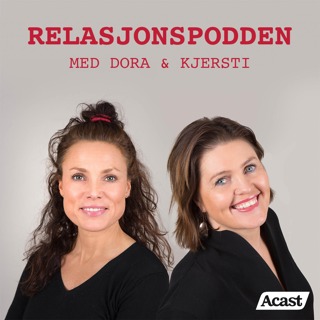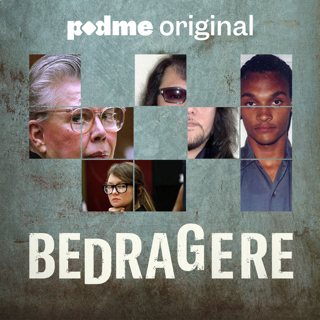
Episode 91 - Coercion and Its Fallout Book Club, pt 1
It’s time for the 3rd Annual ABA Inside Track book club. This year we’ll be discussing the late, great Murray Sidman’s important social work Coercion and Its Fallout. Rob, Diana, and Jackie go on a deep dive through chapters 1-10 of the book including a discussion of rat behavior, societal shocks, and a laundry list of the crummy ways in which society treats itself. Book discussed this episode: Sidman, M. (1989). Coercion and it’s fallout. Boston, MA: Authors Cooperative, Inc. If you're interested in ordering CEs for listening to this episode, click here to go to the store page. You'll need to enter your name, BCBA #, and the two episode secret code words to complete the purchase. Email us at abainsidetrack@gmail.com for further assistance.
17 Jul 20191h 28min

Episode 90 - Social Validity
We behavior analysts work hard, right? We effect behavior change for our clients and feel pretty darn good about our efforts. But what happens if our clients don’t actually like anything we’ve done? This week we’re talking all about social validity, how to make sure we’re paying attention to it, and why some BCBAs might be a bit wary about it. Articles discussed this episode: Wolf, M.M. (1978). Social validity: The case for subjective measurement or how applied behavior analysis is finding it’s heart. Journal of Applied Behavior Analysis, 11, 203-214. doi: 10.1901/jaba.1978.11-203 Carr, J.E., Austin, J.L., Britton, L.N., Kellum, K.K., & Bailey, J.S. (1999). An assessment of social validity trends in applied behavior analysis. Behavioral Interventions, 14, 223-231. doi: 10.1002/(SICI)1099-078X(199910/12)14:43.0.CO;2-Y Hanley, G.P., Piazza, C.C., Fisher, W.W., & Maglieri, K.A. (2005). On the effectiveness of and preference for punishment and extinction components of function-based interventions. Journal of Applied Behavior Analysis, 38, 51-65. doi: 10.1901/jaba.2005.6-04 Gabor, A.M., Fritz, J.N., Roath, C.T., Rothe, B.R., Gourley, D.A. (2016). Caregiver preference for reinforcement-based interventions for problem behavior maintained by positive reinforcement. Journal of Applied Behavior Analysis, 49, 215-227. doi: 10.1002/jaba.286 If you're interested in ordering CEs for listening to this episode, click here to go to the store page. You'll need to enter your name, BCBA #, and the two episode secret code words to complete the purchase. Email us at abainsidetrack@gmail.com for further assistance.
10 Jul 20191h 22min

July 2019 Preview
Summer may be heating up, but ABA Inside Track is staying cool with a remote guest from Iceland and our third annual book club (which we’ll pretend was recorded on a beach). This month, we discuss social validity, virtual reality training with special guest Dr. Berglind Sveinbjornsdottir, and how coercive practices may be synonymous with nuclear war. All that and listener emails and our typical preview episode nonsense. Articles for July 2019 Social Validity Wolf, M.M. (1978). Social validity: The case for subjective measurement or how applied behavior analysis is finding it’s heart. Journal of Applied Behavior Analysis, 11, 203-214. doi: 10.1901/jaba.1978.11-203 Carr, J.E., Austin, J.L., Britton, L.N., Kellum, K.K., & Bailey, J.S. (1999). An assessment of social validity trends in applied behavior analysis. Behavioral Interventions, 14, 223-231. doi: 10.1002/(SICI)1099-078X(199910/12)14:43.0.CO;2-Y Hanley, G.P., Piazza, C.C., Fisher, W.W., & Maglieri, K.A. (2005). On the effectiveness of and preference for punishment and extinction components of function-based interventions. Journal of Applied Behavior Analysis, 38, 51-65. doi: 10.1901/jaba.2005.6-04 Gabor, A.M., Fritz, J.N., Roath, C.T., Rothe, B.R., Gourley, D.A. (2016). Caregiver preference for reinforcement-based interventions for problem behavior maintained by positive reinforcement. Journal of Applied Behavior Analysis, 49, 215-227. doi: 10.1002/jaba.286 Virtual Reality Training w/ Dr. Berglind Sveinbjornsdottir Sveinbjornsdottir, B., Johannsson, S.H., Oddsdottir, J., Sigurdardottir, T.P., Valdimarsson, G.I., & Vilhajalmsson, H.H. (2019). Virtual discrete trial training for teacher trainees. Journal on Multimodal User Interfaces, 13, 31-40. doi: 10.1007/s12193-018-0288-9 Garland, K.V., Vasquez, E., & Pearl, C. (2012). Efficacy of individualized clinical coaching in a virtual reality classroom for increasing teachers’ fidelity of implementation of discrete trial teaching. Education and Training in Autism and Developmental Disabilities, 47, 502-515. Coercion and It’s Fallout Book Club Sidman, M. (1989). Coercion and it’s fallout. Boston, MA: Authors Cooperative, Inc.
3 Jul 201914min

(REBROADCAST) Episode 25 - Virtual Reality
From the archives: If one were to enter the virtual world, could we really expect that person to come out the other side with great fire safety skills and a fearlessness about spiders? Well, this week we discuss two articles that say, "Yes." Featuring our very first call-in co-host, anecdotes galore about Rob's favorite video games, and more terrifying spider scenarios than you could shake a stick it. Strap on those VR headsets and step into the next level of research-based entertainment. And we never even mention that "Virtual Reality" song, because we refuse to make the easy references. And we ran out of money to license it. Articles discussed this episode: Bouchard, S., Cote, S., St-Jacques, J., Robillard, G., & Renaud, P. (2006). Effectiveness of virtual reality exposure in the treatment of arachnophobia using 3D games. Technology and Health Care, 14, 19-27. Padgett, L.S., Strickland, D., & Coles, C.D. (2006). Case study: Using a virtual reality computer game to teach fire safety skills to children diagnosed with fetal alcohol syndrome. Journal of Pediatric Psychology, 31, 65-70. doi: 10.1093/jpepsy/jsj030 And for the gravy: Morina, N., Ijntema, H., Meyerbroker, K., & Emmelkamp, P.M.G. (2015). Can virtual reality exposure therapy gains be generalized to real-life? A meta-analysis of studies applying behavioral assessments. Behaviour Research and Therapy, 74. 18-24. doi: 10.1016/j.brat.2015.08.010 If you're interested in ordering CEs for listening to this episode, click here to go to the store page. You'll need to enter your name, BCBA #, and the two episode secret code words to complete the purchase. Email us at abainsidetrack@gmail.com for further assistance.
26 Jun 20191h 14min

Episode 89 - Next-Level Chaining w/ Dr. Stacie Bancroft
Everybody loves the idea of teaching complex behaviors. Everybody loves teaching new skills efficiently. Is it always possible to do both? Dr. Stacie Bancroft joins us to explain how these two great goals can go great together. This ain’t your parents’ chaining procedure. Articles discussed this episode: Bancroft, S.L., Weiss, J.S., Libby, M.E., & Ahearn, W.H. (2011). A comparison of procedural variations in teaching behavior chains: Manual guidance, trainer completion, and no completion of untrained steps. Journal of Applied Behavior Analysis, 44, 559-569. doi: 10.1901/jaba.2011.44-559 Slocum, S.K. & Tiger, J.H. (2011). An assessment of the efficiency of and child preference for forward and backward chaining. Journal of Applied Behavior Analysis, 44, 793-805. doi: 10.1901/jaba.2011.44-793 Lambert, J.M., Copeland, B.A., Karp, E.L., Finley, C.I., .Houchins-Juarez, N.J., & Ledford, J.R. (2016). Chaining functional basketball sequences (with embedded conditional discriminations) in an adolescent with autism. Behavior Analysis in Practice, 9, 199-210. doi: 10.1007/s40617-016-0125-0 If you're interested in ordering CEs for listening to this episode, click here to go to the store page. You'll need to enter your name, BCBA #, and the two episode secret code words to complete the purchase. Email us at abainsidetrack@gmail.com for further assistance.
19 Jun 20191h 20min

Episode 88 - (ETHICS) The Ethics of Telehealth
We all live in an interconnected, WiFi world. So shouldn’t our work as behavior analysts be the same? Telehealth provides an exciting means to share our science at a distance; however, if we’re not careful, who knows what ethical dilemmas using this technology might lead us into. Have no fear! Your pals at ABA Inside Track hit the books—well, research articles—to figure out some tactics for the ethical BCBA to follow instead. Articles discussed this episode: Peterson, S.M., Woodward, J., Crane, J,, & Garner, M. (2009). Teleconsultaiton in school settings: Linking classroom teachers and behavior analysts through web-based technology. Behavior Analysis in Practice,, 2, 32-39. doi: 10.1007/BF03391746 Machalicek, W., Lequia, J., Pinkelman, S., Knowles, C., Raulston, T., Davis, T., & Alresheed, F. (2016). Behavioral teleheatlh consultation with families of children with autism spectrum disorder. Behavioral Interventions, 31, 223-250. doi: 10.1002/bin.1450 Kaplan, B. & Litewka, S. (2008). Ethical challenges of telemedicine and telehealth. Cambridge Quarterly of Healthcare Ethics, 17, 401-416. doi: 10.1017/S0963180108080535 Hall, J.L. & McGraw, D. (2014). For telehealth to succeed, privacy and security risks must be identified and addressed. Health Affairs, 33, 216-221. doi: 10.1377/hlthaff.2013.0997 If you're interested in ordering CEs for listening to this episode, click here to go to the store page. You'll need to enter your name, BCBA #, and the two episode secret code words to complete the purchase. Email us at abainsidetrack@gmail.com for further assistance.
12 Jun 20191h 15min

June 2019 Preview
Starting summer off right with journal articles! This month we get back into a discussion of ethical dilemmas with the use of telehealth and telemedicine before inviting Dr. Stacie Bancroft to share some advance chaining variations. Finally, while we all enjoy some time off, a look back into the archives with our classic episode on research related to virtual reality. Bonus: Rob’s award-winning writings are only marginally embarrassing to hear about. Articles for June 2019 Episode 88 - Ethics of Telehealth Peterson, S.M., Woodward, J., Crane, J,, & Garner, M. (2009). Teleconsultaiton in school settings: Linking classroom teachers and behavior analysts through web-based technology. Behavior Analysis in Practice,, 2, 32-39. doi: 10.1007/BF03391746 Machalicek, W., Lequia, J., Pinkelman, S., Knowles, C., Raulston, T., Davis, T., & Alresheed, F. (2016). Behavioral teleheatlh consultation with families of children with autism spectrum disorder. Behavioral Interventions, 31, 223-250. doi: 10.1002/bin.1450 Kaplan, B. & Litewka, S. (2008). Ethical challenges of telemedicine and telehealth. Cambridge Quarterly of Healthcare Ethics, 17, 401-416. doi: 10.1017/S0963180108080535 Hall, J.L. & McGraw, D. (2014). For telehealth to succeed, privacy and security risks must be identified and addressed. Health Affairs, 33, 216-221. doi: 10.1377/hlthaff.2013.0997 Episode 89 - Next-Level Chaining w/ Dr. Stacie Bancroft Bancroft, S.L., Weiss, J.S., Libby, M.E., & Ahearn, W.H. (2011). A comparison of procedural variations in teaching behavior chains: Manual guidance, trainer completion, and no completion of untrained steps. Journal of Applied Behavior Analysis, 44, 559-569. doi: 10.1901/jaba.2011.44-559 Slocum, S.K. & Tiger, J.H. (2011). An assessment of the efficiency of and child preference for forward and backward chaining. Journal of Applied Behavior Analysis, 44, 793-805. doi: 10.1901/jaba.2011.44-793 Lambert, J.M., Copeland, B.A., Karp, E.L., Finley, C.I., .Houchins-Juarez, N.J., & Ledford, J.R. (2016). Chaining functional basketball sequences (with embedded conditional discriminations) in an adolescent with autism. Behavior Analysis in Practice, 9, 199-210. doi: 10.1007/s40617-016-0125-0 (REBROADCAST) Episode 25 - Virtual Reality Bouchard, S., Cote, S., St-Jacques, J., Robillard, G., & Renaud, P. (2006). Effectiveness of virtual reality exposure in the treatment of arachnophobia using 3D games. Technology and Health Care, 14, 19-27. Padgett, L.S., Strickland, D., & Coles, C.D. (2006). Case study: Using a virtual reality computer game to teach fire safety skills to children diagnosed with fetal alcohol syndrome. Journal of Pediatric Psychology, 31, 65-70. doi: 10.1093/jpepsy/jsj030 Morina, N., Ijntema, H., Meyerbroker, K., & Emmelkamp, P.M.G. (2015). Can virtual reality exposure therapy gains be generalized to real-life? A meta-analysis of studies applying behavioral assessments. Behaviour Research and Therapy, 74. 18-24. doi: 10.1016/j.brat.2015.08.010
5 Jun 201923min

Episode 87 - High-P/Low-P Sequence
We wind down “It’s Gonna Be MAY” with a final topic that none of us have actually conducted research in but we think the field needs to know more about. Remember how we talked about behavioral momentum last week? Remember how “your BCBA friend” referred to the high-p/low-p sequence as an example of behavioral momentum. Well, THEY’RE USING THAT TERM WRONG!!! Find out why and how to avoid ever making that mistake again. Think of this episode as a public service announcement. Articles discussed this episode: Mace, F.C., Hock, M.L., Lalli, J.S., West, B.J., Belfiore, P., Pinter, E., & Brown, D.K. (1988). Behavioral momentum in the treatment of noncompliance. Journal of Applied Behavior Analysis, 21, 123-141. doi: 10.1901/jaba.1988.21-123 Normand, M.P., Kestner, K., & Jessel, J. (2010). An analysis of stimuli that influence compliance during the high-probability instruction sequence. Journal of Applied Behavior Analysis, 43, 735-738. doi; 10.1901/jaba.2010.43-735 Lipschultz, J. & Wilder, D.A. (2017). Recent research on the high-probability instructional sequence: A brief review. Journal of Applied Behavior Analysis, 50, 424-428. doi: 10.1002/jaba.378 Zuluaga, C.A. & Normand, M.P. (2008). An evaluation of the high-probability instruction sequence with and without programmed reinforcement for compliance with high-probability instructions. Journal of Applied Behavior Analysis, 41, 453-457. doi: 10.1901/jaba.2008.41-453 Nevin, J.A. (1996). The momentum of compliance. Journal of Applied Behavior Analysis, 29, 535-547. doi: 10.1901/jaba.1996.29-535 If you're interested in ordering CEs for listening to this episode, click here to go to the store page. You'll need to enter your name, BCBA #, and the two episode secret code words to complete the purchase. Email us at abainsidetrack@gmail.com for further assistance.
29 Mai 20191h 11min





















